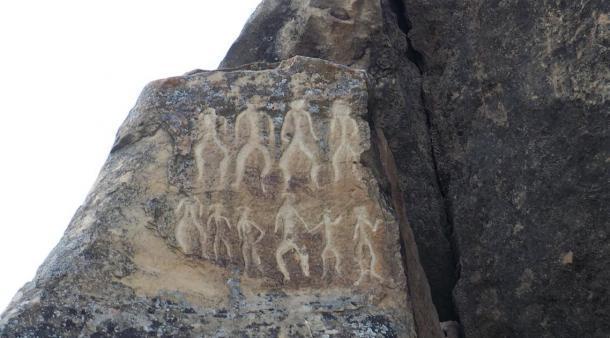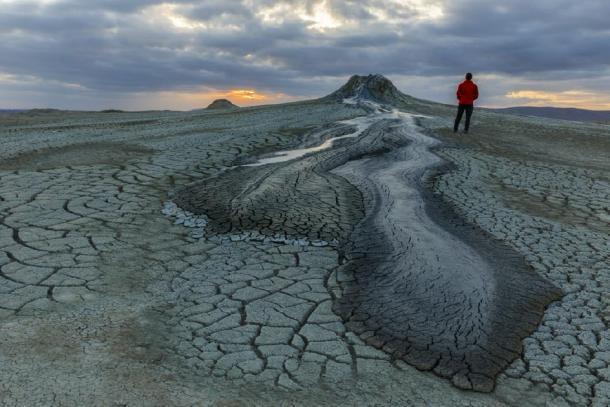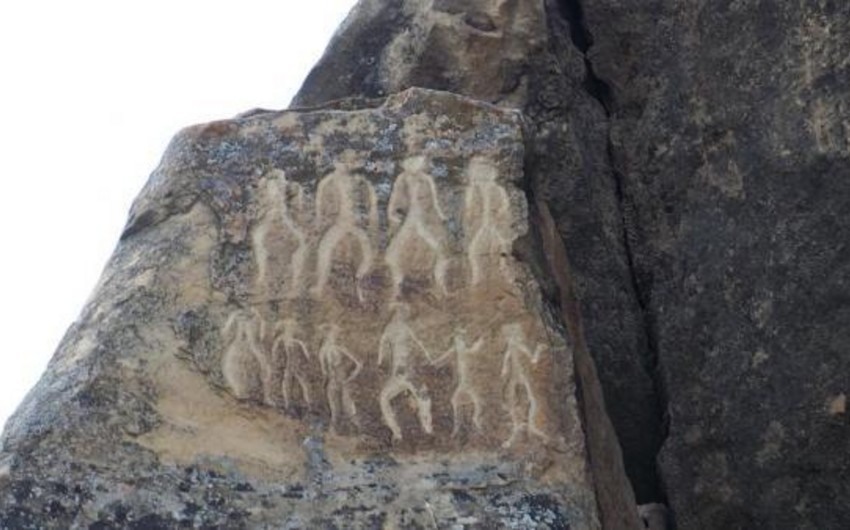Azerbaijan in the Caucasus has long been at the crossroads of civilizations. Its unique geology has created many astonishing features that make parts of the country appear otherworldly, Report says, citing the article from AncientOrigins.Net headlined 'The Hypnotic Musical Stones of Gobustan.'
According to the article, one of the most remarkable sights in Azerbaijan is the musical stone in Gobustan, which is located in an area listed as a UNESCO World Heritage site.
"Gobustan is starkly beautiful and located at the foot of the Caucuses. It is not far from the , the world's largest inland body of water. The area has unique geology, and this has helped to define its history as it was once prone to volcanic activity, which has left spectacular rock formations.
"Gobustan has been inhabited since prehistoric times with many pictographs and rock carvings in the locality being some of the most astonishing in the world. Many of the caves in the area were inhabited until the Middle Ages," the article reads.
According to it, the musical stone of Gobustan is also a product of the unique geology of the area. According to experts, this has been made possible by the interaction of the climate, and natural gas in the stone. It is a resonant stone and can be 'played' to produce remarkable sounds. This stone has likely been producing sounds for thousands of years and is the best known of several similar rock formations in the locality.

"Based on its proximity to ancient rock art, it has been theorized that the stone may have been played during ceremonies in the Stone Age. In recent centuries, traditional Azeri musicians have played the rock by striking it with smaller stones. Its music has been described as 'eerie and haunting' by some while others liken it to the sound of a tambourine. Today, traditional Azeri musicians regularly play the stone, and they are typically accompanied by other instrumentalists and singers."
The author of the article goes on to say that the musical stone was part of the interval entertainment during the European Song Contest, the world's most popular music contest, in 2012.
"Set in a landscape that has been described as 'stunning and deeply spiritual,' the unique stone, known as a Gaval Dash, is located in the Gobustan National Park, which has many of the world's rare mud volcanoes. These formations are created by hot mud geysers that occasionally erupt from the depths of the earth. They are constantly bubbling and thankfully not as dangerous as lava volcanoes."

The article says that the stone is located in a circular open space in a rocky defile (a narrow pass between mountains or hills), set among unusual rock formations and reached by a sandy path. The stone has been placed on two smaller stones by the authorities and it is about 6 feet (2m) long. It is rectangular and lies flat and is not particularly impressive until it is played by a musician.
Gobustan State Reserve is near the village of Gobustan, which is some 35 miles (60 km) from the Azeri capital, Baku. It is possible to take a tour of the park, and the musical stone makes up part of the itinerary. A small fee is charged to enter the park, and tour guides, typically proficient in several languages, are also available, reads the article.


 https://static.report.az/photo/dd1b0b40-297c-45af-b629-ee809f0e027b.jpg
https://static.report.az/photo/dd1b0b40-297c-45af-b629-ee809f0e027b.jpg

